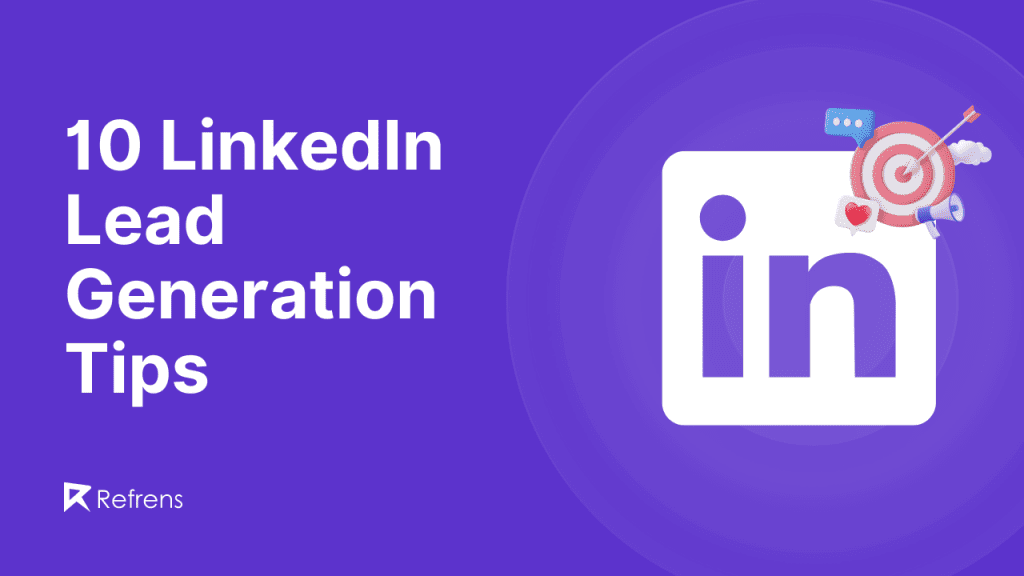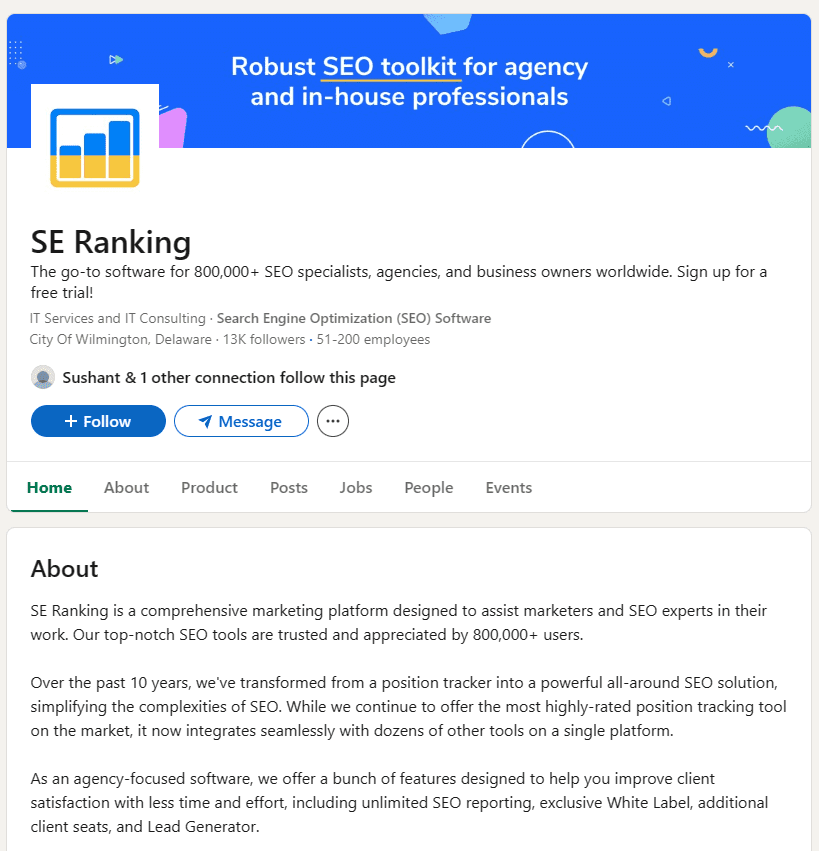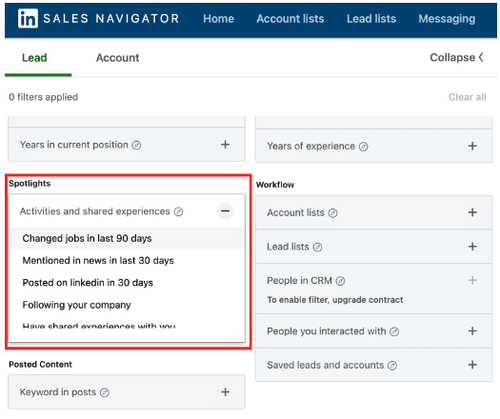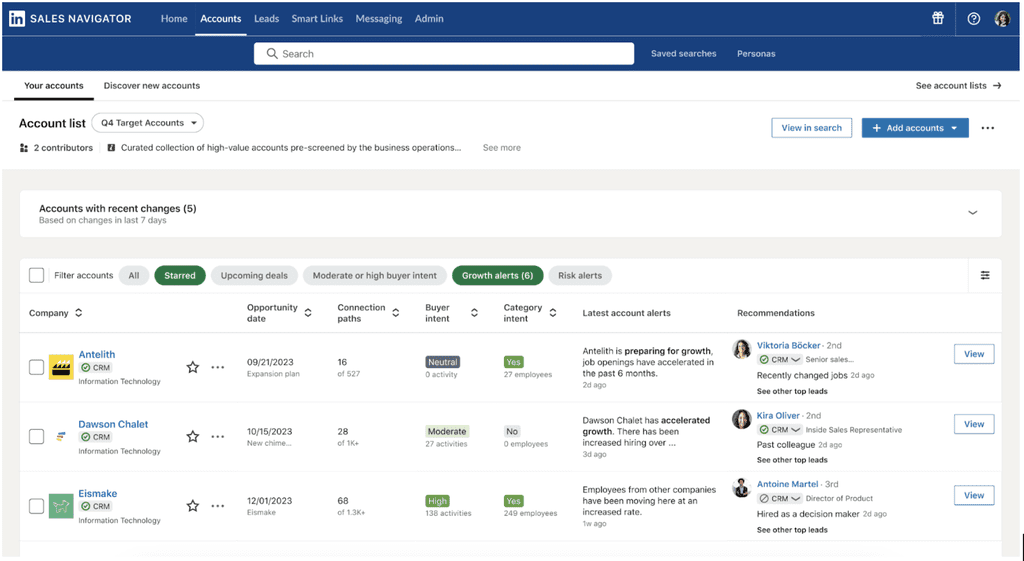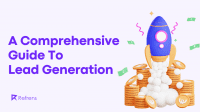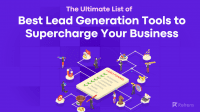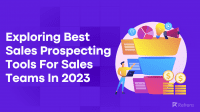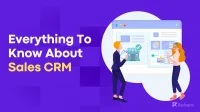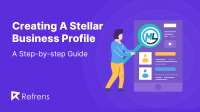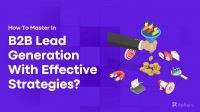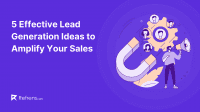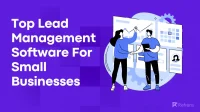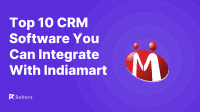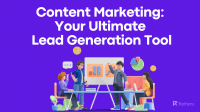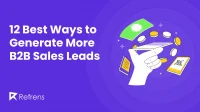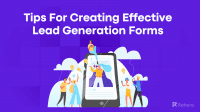With over 850 million members worldwide, LinkedIn is the world’s largest professional networking site. It is too big for brands not to use it for lead generation. 62% of B2B marketers already generate leads successfully on LinkedIn. Even 73% of buyers are more interested in salespeople who reach out via LinkedIn than any other channel.
These statistics highlight that optimizing your LinkedIn strategy should be a top priority for driving more qualified leads. However, the crowded LinkedIn space means you must go beyond mere presence and adopt strategic approaches to generate high-quality leads. And that’s what we’ll discuss today.
We will explore actionable tips to not only navigate the expansive network but also to establish meaningful connections that translate into tangible business opportunities.
10 Strategic Tips to Generate MQLs On LinkedIn
Whether you’re new to LinkedIn lead generation or have been doing it for years, these proven tips will help you narrow down your search and capture highly qualified leads. From basics like optimizing your profile to advanced tactics like utilizing LinkedIn Groups, we’ll discuss it all. Let’s dive in.
1- Understand Your Audience
Without clarity on your ideal customer profile, your efforts are essentially shot in the dark. You’ll struggle to create content that resonates, participate in relevant discussions, and compellingly tailor your outreach. Spending time upfront researching and building detailed buyer personas is invaluable for informing your LinkedIn strategy. More specifically,
- Target roles and titles you want to connect with
- Groups and communities they engage in
- Content topics and pain points that resonate with them
- Demographic filters like location, company size, etc.
Here’s how you can do it.
Identify the industries, job roles, and specific characteristics that define your ideal customers. Tailor your content and engagement strategies accordingly when prospecting on LinkedIn to connect with potential leads more effectively. Additionally, use LinkedIn’s insights to gain a deeper understanding of your audience.
Regularly revisit these insights to ensure your lead generation strategy stays aligned with the evolving preferences of your audience, making your efforts on LinkedIn more impactful.
2- Optimize Your Company Profile
A compelling LinkedIn profile is not just a place to showcase your products or services – it’s where you share the beating heart of your company. Who you are. What values drive you? And how you’re making the world a little better each day.
Inject your page with personality, authenticity, and emotion. Show potential leads that your presence isn’t just a corporate formality but a team of passionate individuals on a mission.
Here are some key elements to focus on.
- Profile Photo and Banner: Your profile image and banner are the first things that people see when they visit your page. While it is a good idea to put your logo in the profile picture, leverage the banner to put out more information.
- Headline: This should be a punchy, attention-grabbing statement that summarizes your company’s mission and target audience. For example, instead of just “Marketing Agency,” try “Helping you grow your brand and convert leads like magic.
- About Section: Explain what your company does, who it serves, your USP, and the powerful outcomes it drives for customers. Use simple, clear language – avoid vague claims or industry jargon. Feel free to add relevant keywords to improve your visibility.
- Products: Dedicate a separate section to showcasing your products or services. Use clear and concise descriptions that highlight the benefits each product offers. Also, consider adding links to product pages or case studies for further information.
Additionally, add your website and contact details to entice users into reaching out. Having a toll-free call number can prove beneficial to driving more calls.
SE Ranking shows how a high-performing profile is done. Their headline boasts a quantifiable result (building trust), their banner clearly defines their target audience, and the About section dives deep into their offerings.
Tip: Highlight the availability of a toll-free call line for immediate support to underscore your commitment to customer convenience and personalized service.
3- Leverage LinkedIn Ads
Sponsored content and InMail ads help your branded posts and personalized messages cut through the noise in LinkedIn’s crowded news feeds. To maximize the impact of your LinkedIn Ads, consider these effective tips:
- Use Lead Gen Forms for gated content: Place Lead Gen Forms in front of popular whitepapers, ebooks, or webinars to capture contact information.
- Target by member attributes: Leverage LinkedIn’s extensive member target options beyond just job title and company. Target by groups, skills, engagement with your content, and much more.
- Test multiple ad formats: LinkedIn supports a range of formats, from video to image ads. Experiment with different options and analyze performance data using LinkedIn analytics tools to determine what resonates most with your audience.
- Always include a clear CTA: Regardless of ad format, clearly showcase a strong call-to-action to schedule a demo, subscribe, download content, etc., within the first three seconds.
- Analyze cost per lead: Go beyond general metrics and delve into your true cost per lead generated, average lead quality, and conversion rates. Continuously optimize your strategy based on this valuable data. An AI LinkedIn Ad Copy Generator can help you drive more leads with your LinkedIn ad campaigns.
4- Use LinkedIn’s Advanced Search Feature
LinkedIn’s advanced search offers robust filters to narrow down your search beyond just job titles and companies. For instance, you can find leads based on connections, locations, interests, past companies, schools, industries, and more. Moreover, you can leverage boolean search techniques using AND, OR, and NOT operators to create highly targeted queries.
Here’s an example. When I search for “b2b marketing” and set the location to the US, LinkedIn returns me with about one million results.

When I search for “account-based marketing” in the US, I see about 34K results.
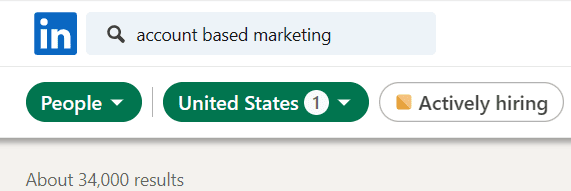
But combining these terms using AND further narrows the results to only 13,000 prospects.
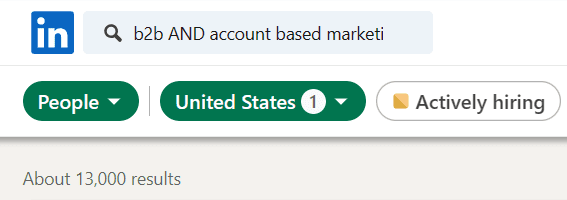
From there, apply additional filters like industry, title, company, groups, and service categories. Choosing the right combinations can help uncover your ideal prospects and drive better results in your outreach efforts.
5- Publish High-Quality Content Regularly
Content serves as the cornerstone for building trust and credibility with your audience. By consistently providing valuable, relevant, and insightful information, you position yourself as an industry expert. Besides, effective content educates your audience about your industry, products, or services. When potential leads understand the value you offer, they are more inclined to consider your business when making purchasing decisions.
Here are some types of content that drive better results on LinkedIn.
- Carousel posts with multiple images, slide decks, or single-page PDFs with valuable insights.
- Eye-catching images, infographics, and GIFs to break up text and grab attention.
- Tips, industry news, behind-the-scenes, explainer videos, or event recaps.
- Long-form (2000+ words) content with unique perspectives on industry trends, case studies, or personal stories.
6- Engage with Your Network Regularly
Simply amassing connections won’t convert prospects into leads. You need consistent, value-driven engagement. Aim for regular interaction by commenting on posts, asking thoughtful follow-ups, and sharing relevant articles. The key is providing value rather than focusing solely on conversions. Here are some tips.
- Be present and actively reply to comments and questions on your posts.
- Appreciate and address opposing viewpoints respectfully to foster a healthy exchange of ideas.
- Share your insight, new approaches, and actionable advice that helps your potential customers solve a problem.
- Promote content from others your audience would find valuable.
- Avoid generic replies and tailor your responses to the specific content.
Tip: Schedule 30 minutes each week to sustain meaningful engagement.
7- Utilize LinkedIn Groups
Groups often serve as hubs for industry discussions and trends. Participating actively in a few niche LinkedIn Groups aligned with your audience gives you access to valuable insider information and keeps you informed about the latest developments. As you contribute valuable insights and engage in meaningful conversations, you enhance your credibility and increase your visibility within your industry.
Here are some tips on how to find and choose the right groups.
- Join groups specific to your ideal customer’s industry, job title, or interests.
- Look for groups with regular discussions, comments, and member interactions. Engaged groups offer better outreach potential.
- Share insights, resources, or helpful advice relevant to the group’s theme. Avoid solely promotional posts.
- Don’t spam! Share helpful content with links back to your website or landing pages organically within discussions.
- Strike a balance between group size and quality. Larger groups offer broader reach, while smaller, more focused groups often lead to deeper and more meaningful connections.
8- Use LinkedIn’s Sales Navigator
LinkedIn Sales Navigator offers enhanced search capabilities and deeper insights into extended contact networks. As you engage with prospects, Sales Navigator enables you to tailor your messaging and outreach strategy based on specific keyword mentions that indicate interests and intent. You also get unlimited profile searches that can be exported to your sales CRM for further nurturing and follow-ups.
Understanding how to use LinkedIn Sales Navigator effectively can significantly enhance your lead generation efforts.
Here are some key features of LinkedIn Sales Navigator that help generate more leads.
- Extended Network Access: Unlock the full potential of LinkedIn’s global network with unlimited searches for efficient lead discovery.
- Prioritize Leads: Spotlights automatically highlight the most promising leads with filters like changed jobs, published content, mentioned in the news, or following your company.
- Outreach and Messaging: Benefit from an additional 50 InMail messages to connect with individuals beyond your immediate network.
- Personalize Outreach: Lead profiles within Sales Navigator provide background details to reference in initial messages. This personalization helps connect over shared experiences and interests for higher response rates.
- People and Companies Tracking: Save promising accounts and leads to receive real-time updates and alerts. Build Custom Lists and share notes across the team for streamlined collaboration.
- Identify Potential Leads: Receive an alert every time a prospect from your saved account views your LinkedIn company page or LinkedIn feed on website. It also highlights people who are showing intent so you can reach out to the right people at the right time.
9- Get Recommendations and Endorsements
Recommendations act as authentic testimonials from colleagues, clients, or partners. When potential leads see positive feedback rom others in your network, it provides third-party validation of your skills and character, reinforcing your credibility.
But getting them requires proactively asking for validation from your network. Here are some tips to get more recommendations and endorsements.
- Request recommendations from existing clients when the positive impact of your work is still fresh in their memory.
- Specify key achievements or skills you’d like them to emphasize.
- Express the significance of their recommendation in boosting your professional credibility.
- After they’ve provided a recommendation, express gratitude and offer to reciprocate if they need a recommendation in return.
10- Follow Up with Your Leads
In the fast-paced online environment, even warm leads can quickly cool off and move on to other options unless you follow up after the initial contact. Besides, a follow-up demonstrates your continued interest and commitment, fostering a sense of trust and reliability.
Follow these best practices when following up with prospects to get better results.
- Tailor each follow-up to the individual, referencing specific details from previous interactions.
- Provide meaningful content, insights, or resources to showcase ongoing value.
- Utilize various communication channels, such as LinkedIn messages, email, or phone calls, to cater to diverse preferences.
- Outline clear next steps to guide the progression of the conversation.
- Pay attention to signals like opened messages or profile views to gauge interest.
- Be persistent without becoming overly pushy to demonstrate dedication without overwhelming your leads.
Conclusion
Start by optimizing your company’s LinkedIn profile to attract the right audience. Then, create and share content or participate in niche groups specifically appealing to your ideal prospect’s interests. Additionally, use LinkedIn’s advanced search capabilities and sales navigator to discover relevant prospects already active in your industry and personalize your outreach by referencing any shared connections or groups. Lastly, take follow-ups not just to close sales but to nurture authentic relationships.

